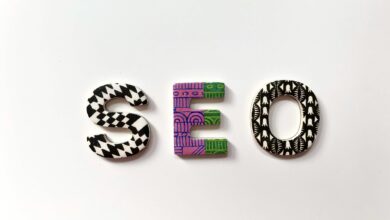Mastering SEO User Experience: A Comprehensive Guide

In the modern digital landscape, one needs to balance SEO with user experience for online success. “SEO user experience” brings together two of the most critical components in digital strategy: the optimization of your website for search engines and adherence to the needs and expectations of your audience.
With algorithms constantly on the rise and the changing trends in user behavior, knowing how to effectively fuse those elements together can make all the difference.
This must-read guide provides actionable tips and best practices for aligning SEO and User Experience. It helps pull off achieving top search ranking. At the same time, it offers your visitors a seamless and engaging experience.
What Is SEO User Experience?
SEO user experience is the practice of designing and optimizing your website so that it not only ranks well in search engine results but also delivers a satisfying experience to users. It’s about ensuring that your site is not only visible, but also engaging and easy to use.
This holistic approach combines the technical aspects of SEO with the principles of UX design to create a site that both search engines and human visitors love.
Why SEO and UX Should Work Hand in Hand?
1. Improved Search Rankings: Search engines like Google are increasingly prioritizing user experience in their algorithms. Factors such as page load speed, mobile responsiveness, and intuitive navigation can influence your site’s search rankings.
When your site is optimized for a great user experience, it’s more likely to rank higher in search results.
2. Higher Engagement and Retention: A well-designed, user-friendly site keeps visitors engaged longer and encourages them to explore more pages. This can lead to lower bounce rates and higher conversion rates.
Essentially, if users find what they’re looking for easily and enjoy their time on your site, they’re more likely to return and recommend it to others.
3. Better Conversion Rates: Optimizing for UX means creating a smooth journey from landing page to conversion. This includes clear calls-to-action, simple navigation, and fast-loading pages.
When users can quickly and easily find what they need, they’re more likely to complete a desired action, such as making a purchase or signing up for a newsletter.
Key Strategies for Optimizing SEO User Experience
1. Prioritize Page Load Speed: Page speed is a critical factor for both SEO and user experience. Slow-loading pages can frustrate users and lead to high bounce rates.
Tools like Google Page Speed Insights can help you analyze your site’s speed and offer recommendations for improvement. Consider optimizing images, leveraging browser caching, and minimizing code to boost performance.
2. Ensure Mobile Responsiveness: With a growing number of users accessing websites via mobile devices, mobile responsiveness is essential. Google’s mobile-first indexing means that your site’s mobile version is used to determine search rankings.
Use responsive design techniques to ensure site looks and functions well on all devices. From smartphones to tablets.
3. Create Clear and Intuitive Navigation: A user-friendly site should have a clear and logical structure. Implement an intuitive navigation menu that allows users to find information quickly and easily. Use descriptive labels for your navigation links, and consider incorporating a search function to help users locate specific content.
4. Optimize Content for Readability and Engagement: Content is still king, but its presentation matters just as much. Break up text with headings, bullet points, and images to make it more digestible. Ensure that your content is relevant to your target audience and incorporates keywords naturally.
Engaging content not only attracts visitors but also encourages them to spend more time on your site, Visitors are drawn in by quality. They explore more pages.
5. Focus on Accessibility: An inclusive website benefits all users and can positively impact your SEO. Ensure that your site is accessible to people with disabilities by using alt text for images, providing text alternatives for multimedia, and ensuring that your site is navigable via keyboard. Accessibility enhancements contribute to a better overall user experience.
Measuring the Impact of SEO User Experience
To gauge how well your site is performing in terms of SEO user experience, use analytics tools like Google Analytics and Google Search Console. Monitor metrics such as bounce rate, average session duration, and conversion rates. Look for patterns and areas where users may be encountering difficulties, and adjust your strategies accordingly.
Conclusion
In the digital age, the intersection of SEO and user experience is crucial for online business success. By prioritizing both aspects, you can create a website that attracts search engine traffic. It also provides a satisfying and engaging experience for visitors.
Remember, great user experience leads to better SEO results. Strong SEO performance enhances user satisfaction. Balancing these elements will set you up for long-term success in the competitive online landscape.
As you refine your SEO user experience strategy, keep in mind that the ultimate goal is to serve your audience and become a freelancer. This also means meeting search engine criteria. When you achieve that balance, you’ll build a site that stands out in search results and in hearts of users.




